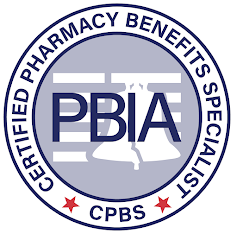Copay Adjustment Programs: What Are They and What Do They Mean for Consumers and other notes from around the interweb:
- Copay Adjustment Programs: What Are They and What Do They Mean for Consumers? Americans spend on average more than $1,000 per person per year on prescription drugs, far surpassing prescription drug spending in other peer nations. According to a 2023 KFF poll, 3 in 10 adults taking prescription drugs report that they have not taken their medication as prescribed due to costs. In a 2023 KFF consumer survey, nearly one-quarter (23%) of insured adults reported that their health insurance did not cover a prescription drug or required a very high copay for a drug that a doctor prescribed, increasing to more than one-third (35%) of insured adults in fair or poor physical health. People who need specialty or brand-name medications to treat chronic health conditions such as diabetes, cancer, arthritis, and HIV are especially vulnerable to high costs, particularly considering rising deductibles over the years.
- Analysis finds that after 2 years GLP-1 drugs for weight loss don’t justify their price. Patients who have taken popular GLP-1 medications for weight loss aren’t saving themselves or their health plans any money, at least not right away. Eagan-based pharmacy benefits manager Prime Therapeutics issued that disappointing finding this week after analyzing the health care spending of thousands of patients who started taking GLP-1 medications in 2021, comparing them with similar patients who didn’t take the drugs. Spending was $4,206 higher per patient the year after they started taking the GLP-1 medications compared to the group of patients who didn’t take it, primarily because of the costly medications themselves. “It’s too soon to conclude whether these drugs will have a return on investment from a total cost of care perspective,” said David Lassen, Prime’s vice president of primary clinical services. “We didn’t expect to see that in two years, but we were hopeful that we would start to see something!”
- ‘Biosimilar’ drugs are gaining market share, Tufts researchers find. Biosimilars drugs are almost identical copies of original biologic products. Early biosimilars had slower adoption and savings than expected; however, biosimilars launched in recent years have had more success. With several biosimilar launches planned in the next few years, it is important to understand how the state of the market might foretell significant market savings in the future. To do so, we explored how the introduction of biosimilars affected originator-biosimilar markets during the period 2017–22. We found that after biosimilar availability, payers increasingly allowed choice of preferred products. By 2022, 76 percent of commercial payers’ coverage policies listed two or more products (originator or biosimilar) as first-line options. Biosimilar market shares exceeded those of originators by a mean of three years after the first biosimilar launch, and originator-biosimilar market average sales price declined substantially. Taken together, these findings provide evidence of a functioning competitive market.
- FDA Approves IV Form of Stelara Biosimilar Selardsi. Alvotech and Teva Pharmaceuticals announced this week the FDA approval of Selardsi (ustekinumab-aekn) to treat adults with moderately severe and severe Crohn’s disease or ulcerative colitis, according to a news release. This approval is an expansion on the reference product Stelara and is expected to launch in the first quarter of 2025 in the United States. Selardsi will be available in a 130 mg/26mL single dose and will be administered intravenously. Dosage is dependent on weight. If the patient weighs 121 pounds or less, they will be given two vials. Patients weighing between 121 pounds and 187 pounds should take three vials. Patients weighing more than 187 pounds should be given four vials. Subcutaneous maintenance doses of 90mg should be given every eight weeks after the initial intravenous dose.

